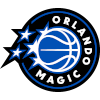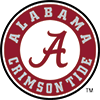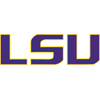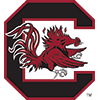In my 10th year of Bracketology, a lot has changed. Bracketology as a whole exploded, now with more than 200 different entries at BracketMatrix expected for the 2024 tournament, a number that has likely probably doubled in the last five years.
I got into bracketology like everyone else. In addition to being a diehard college basketball fan, the bracketologists in the media like Joe Lunardi always seemed to be off on a few teams. And so, it went from "I can do better than this" to creating my own bracket the last 10 years.
For a live, updated bracket throughout the week check out our RotoWire Bracketology page.
Along the way (in 2018), RPI was dropped as the main metric used by the NCAA committee, which changed the game entirely. If you're unfamiliar, RPI is an archaic metric that isn't good and often doesn't make sense, yet the committee used it until 2018 when they were fed up with getting ridiculed every year.
As an example, this season, Dayton is the No. 4 team in RPI as of writing, compared to No. 5 UConn and No. 8 Drake. I could list more examples, but check out the list for yourself.
While the NET isn't perfect, it's much better and the main reason bracketology has gotten easier since the days of RPI. In addition to more bracketologists, it's easier to rate teams with all of the metrics available to the public instead of trying to wonder why RPI likes teams for seemingly no reason.
The committee has also publicly said they'll refer to some bracketologists when analyzing teams. You can't blame them given the work that full-time bracketologists like Lunardi put into studying each of these teams.
That said, it'll always be close to impossible when comparing mid-major teams with those from the major conferences, especially on the bubble. No matter what the numbers say, you can argue 10 different ways when comparing a team from the Big East with one from the Missouri Valley and inevitably, that'll be a constant talking point until Selection Sunday.
MAJORS vs MID-MAJORS
 Indiana State: NET 27, 27-6 overall, 1-4 Q1, 4-1 Q2, one Q4 loss, BracketMatrix projected 11-seed
Indiana State: NET 27, 27-6 overall, 1-4 Q1, 4-1 Q2, one Q4 loss, BracketMatrix projected 11-seed
Following Sunday's loss in the MVC title game, the Sycamores knew they'd be in discussions for the next seven days. They're firmly on the bubble without any great wins but an overall solid resume.
The main thing is that the metrics don't hurt them. They rate well across the board, and a top-30 NET ranking may be most important. Their best win being at Bradley isn't exciting, and they also lost at home by 13 points to Illinois State as a 17-point favorite. Even worse, 22 of their 27 wins came against Q3/Q4 teams, which is often the case for mid-majors, and there's nothing they could've done about that unless they won at Michigan State or Alabama. Their hope is that the committee ignores their worst loss when starting forward Jayson Kent missed out due to injury.
 New Mexico: NET 25, 22-9 overall, 3-6 Q1, 3-1 Q2, one Q3 loss, one Q4 loss, BracketMatrix projected First Team Out
New Mexico: NET 25, 22-9 overall, 3-6 Q1, 3-1 Q2, one Q3 loss, one Q4 loss, BracketMatrix projected First Team Out
The Lobos are nearly identical with one really bad loss (home against Air Force) and a bunch of Q3/Q4 wins. A bigger problem might be their Strength of Record, which is 71 before their game against Boise State, likely due to a non-conference strength of schedule rated 272 by NET. They're also 5-6 on the road compared to 9-4 for Indiana State.
While a lot of the quad numbers are similar, it's hard to argue for New Mexico over Indiana State.
 South Florida: NET 79, 23-6 overall, 1-0 Q1, 5-3 Q2, one Q3 loss, two Q4 losses, BracketMatrix projected 12-seed
South Florida: NET 79, 23-6 overall, 1-0 Q1, 5-3 Q2, one Q3 loss, two Q4 losses, BracketMatrix projected 12-seed
South Florida is in a much different camp because none of its metrics are nearly as good as the other teams on the bubble. I think the Bulls may be the best team in the AAC, but if they don't win the conference tournament, that won't matter, especially after losing to Tulsa in the regular-season finale. In addition to having minimal high-level wins, they were brutal early in the season and have three Q3/Q4 losses, which can't be overlooked.
 Villanova: NET 40, 18-14 overall, 4-10 Q1, 6-1 Q2, 2-3 Q3, BracketMatrix projected Third Team Out
Villanova: NET 40, 18-14 overall, 4-10 Q1, 6-1 Q2, 2-3 Q3, BracketMatrix projected Third Team Out
I haven't thought Villanova was good all season and pretty much counted them out a couple months ago, but they somehow found a way back. The Wildcats won five of six games by double digits last month, and their predictive metrics popped. However, they rank 60 in SOR, which is worse than a lot of other major-conference teams not even close to the bubble.
I get that they have impressive wins against North Carolina, Creighton and Texas Tech, but I think their three Q3 losses are a problem. At the end of the day, I'm not sure there are many reasons to put a 15-loss team into the tournament (assuming they lose in the Big East tourney) from a conference that really only has three guaranteed tourney teams.
After almost fumbling Wednesday's must-win game as a 24-point favorite against 3-28 DePaul, I can't put them into the tournament unless they win the Big East tourney.
 Colorado: NET 26, 22-9 overall, 2-5 Q1, 6-4 Q2, zero Q3/4 losses, BracketMatrix projected 11-seed
Colorado: NET 26, 22-9 overall, 2-5 Q1, 6-4 Q2, zero Q3/4 losses, BracketMatrix projected 11-seed
If the Pac-12 had more than three teams projected into the NCAA tournament, Colorado's resume would probably be enough for better than a 10-seed, even creeping into the six or seven range. Instead, the Pac-12 is once again bad in its final season, and the Buffaloes are on the bubble despite being 13-7 in conference play.
If the Buffs miss out, it'll likely be because of a bad non-conference SOS, ranking worse than 250. Things would be different if they won at Colorado State and against Florida State, and unfortunately, the 27-point win against Miami doesn't mean as much now as it originally did. So, the Buffs have to tout their best regular-season wins (Washington and Oregon) and then beat fellow bubble team Utah in the Pac-12 tournament.
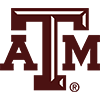 Texas A&M: NET 47, 18-13 overall, 5-6 Q1, 6-3 Q2, 2-4 Q3, BracketMatrix projected Second Team Out
Texas A&M: NET 47, 18-13 overall, 5-6 Q1, 6-3 Q2, 2-4 Q3, BracketMatrix projected Second Team Out
The Aggies lost five in a row, dropped out of the projected tournament and then closed the season winning three straight. I don't think they'll make it, but some bracketologists are giving them hope. I can't get past an at-large bid going to a power team with a 2-4 record in Q3 games and 14 total losses. Similar to Villanova, their SOR ranks outside the top 50, which is worse than teams like Providence, Syracuse and Iowa.
Metrics prior to games on Thursday, March 14
For a live, updated bracket throughout the week check out our RotoWire Bracketology page.
















